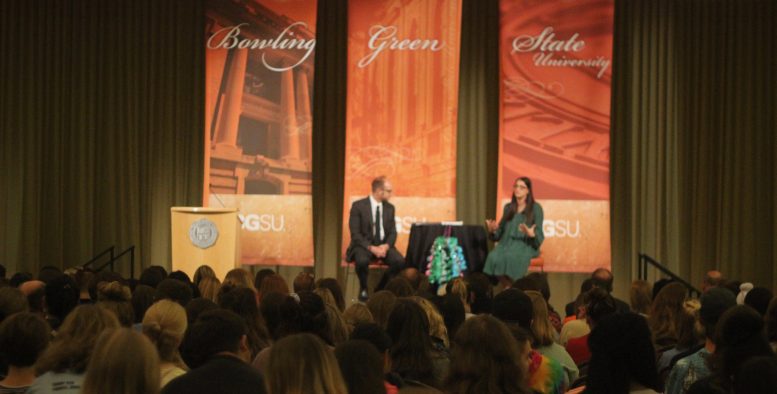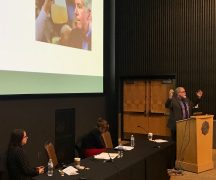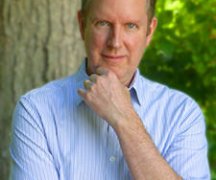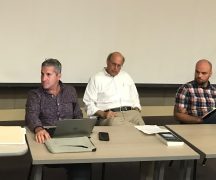By DAVID DUPONT
BG Independent News
Mona Hanna-Attisha had the science on her side. She had statistics. She had graphs.
The pediatrician needed more than that to convince people that something was desperately wrong with the water in Flint, and it was harming the Michigan city’s children,
Hanna-Attisha needed a story.
So she told about one of her young patients. She put a child’s face on the numbers.
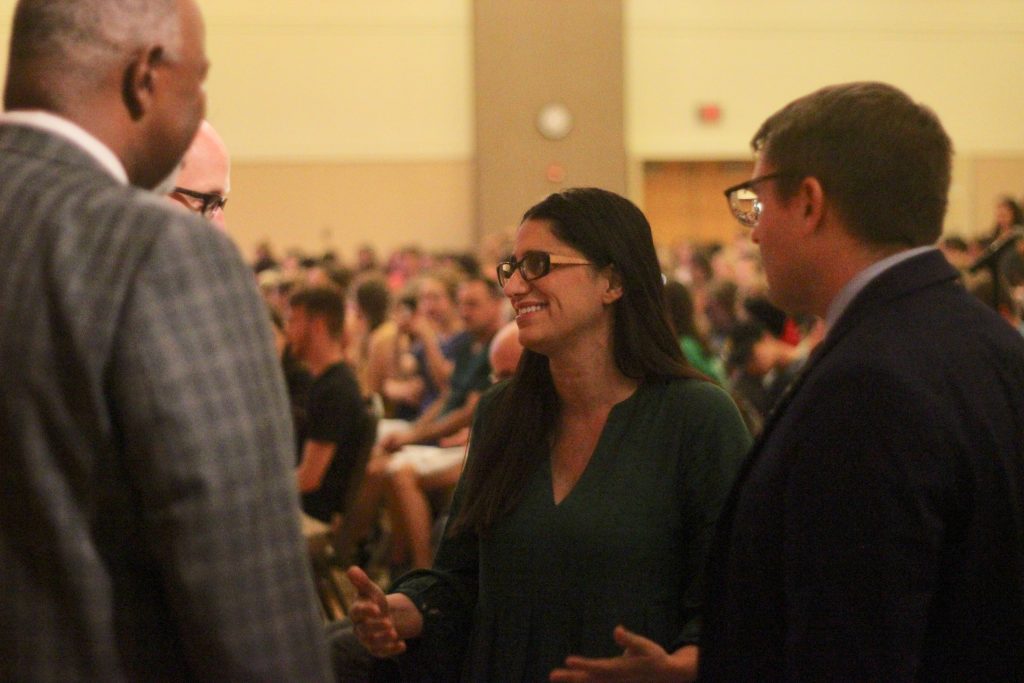
And this was just one of the many stories, she could have told. Every datapoint had a child’s face behind it.
Hanna-Attisha, who is also a professor at Michigan State University, spoke Tuesday (Oct. 1) to a packed student union ballroom crowd of more than 1,200 listeners, plus more watching in another room and others watching on the Firelands campus.
Hanna-Attisha’s book on the Flint Water Crisis “What the Eyes Don’t See: A Story of Crisis, Resistance, and Hope in an American City,” was the Bowling Green State University’s Common Read this semester.
The presentation was staged as a conversation between the author and Tim Davis, a BGSU professor of biological science and a leading water researcher.
Though a scientist by training, Hanna-Attisha said she’s been fascinated by story telling since she was a child. She even delayed her graduation from the University of Michigan by a year so she could study creative writing.
Yet even as she was absorbed in battling the water crisis as a doctor, she didn’t think about writing a book. She was laying the ground work by keeping a journal, and saving scientific articles and news clips.
It wasn’t until she met editor Chris Jackson that she let him persuade her to shape that material into a book.
Davis said it was a gripping account, even if the reader knows what’s going to happen. He likened it to a book on the Titanic. The reader knows the iceberg is out there and is constantly thinking “turn left.”
Hanna-Attisha and others in Flint didn’t have the benefit of such hindsight.
With “white-coat confidence,” she kept urging her patients to drink the water because it had been declared safe. Then the specter of lead poisoning appeared.
That was different. Lead is the oldest known neuron toxin. It causes a myriad of short-term and long-term health, developmental, and behavioral problems.
The levels of lead were elevated when a state-appointed emergency manager ordered the city to switch its drinking water source. Instead of drawing water from Lake Huron via the Detroit River, the city started to draw water from the Flint River. The water was insufficiently treated, and it leached lead from the old corroded pipes.
The lead levels in the blood of Flint residents, especially the children, rose dramatically.
When Hanna-Attisha realized what was happening, she didn’t have a choice but to act.
“I literally took an oath.” Beyond that she had a moral and ethical imperative “to do the hard thing,” she said. “You take those risks. You fight for justice.”
Hanna-Attisha told the BGSU audience: “We’ve all taken an oath. It’s all our civic responsibility to speak up. This is what it means to be part of a community.”
And those in power fired back, questioning her research.
That reaction was so strong, she started second-guessing herself. The stress had her heart racing. “Maybe I should see a doctor,” she thought.
But other scientists, public health officials, and journalists rallied to the cause.
People from all over the country shipped bottle water to the city.
A group of pre-schoolers, even created a multi-colored, spiral chandelier for Hanna-Attisha out of water bottles. Just by doing what kids should be doing — learning, using their fine motor skills, making a mess — “they turned something that was tragic, our dependence on water bottles, into something beautiful.”
They’ve continued making them, and Hanna-Attisha presented BGSU a smaller version of the chandelier.
Still she’s discouraged that companies such as Nestle, which draws Great Lakes water and pays little for it, have used the crisis to stir up concerns about tap water and increase their profits.
The book moved into other areas beside the water crisis. Hanna-Attisha felt she needed to explain how she got to Flint. She’s an immigrant of Iraqi descent. It’s important to tell her story in a time when other Iraqis were being banned from the country.
She traced her roots as an activist and of lead as public health danger back further to the work of Alice Hamilton, like her a scientist and physician. Hamilton is considered the mother of occupational medicine.
She battled Charles Kettering of General Motors and toxicologist Robert Kehoe over the addition of lead to gasoline.
Hamilton saw the results of lead’s use when workers in GM plants would have seizures while working with it.
In the end, the company won, and the Kehoe Paradigm was put in place. It maintains that without inconvertible evidence a substance is dangerous, it should be considered safe.
So lead was used in gasoline and paint, and its effects continue to be felt especially within urban areas, typically occupied by poor people of color.
“There’s no safe level of lead,” Hanna-Attisha said. Even after Flint, the EPA has only lowered its standard to 12 parts per billion, from 15 part per billion. “The action taken by the EPA was a joke.”
During the question and answer session, Williann Moore, of Toledo, testified to the continuing problems of lead in the city.
The former president of the Toledo NAACP and retired teacher has seen its effects, yet city officials have ignored the issue, pleading lack of resources.
More needs to be done to address lead in homes. People have a right to safe places to live, she said.
In closing her talk, Hanna-Attisha evoked those most vulnerable to such dangers.
“Let us always be inspired by our children,” she said. “Let us be constantly woke to the challenges they face. Everywhere there are kids who wake up to face those challenges, and we all have a role to play to make their future as bright and beautiful as possible.”

